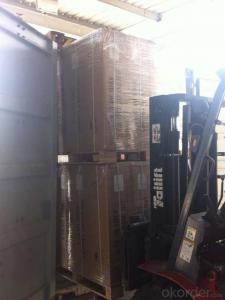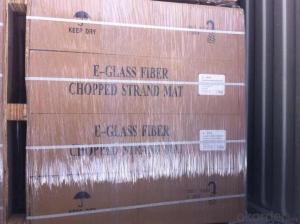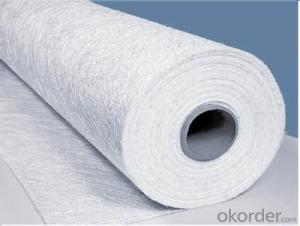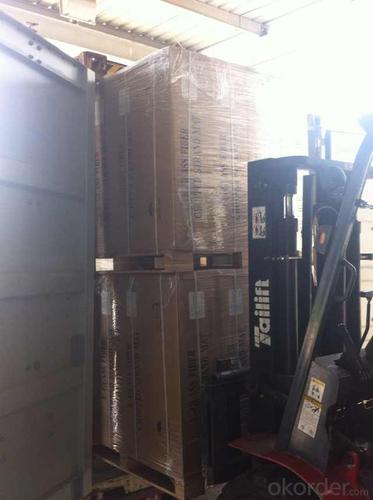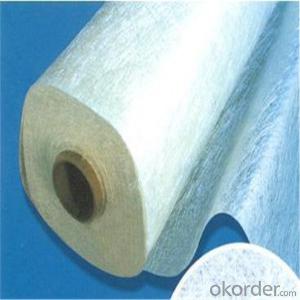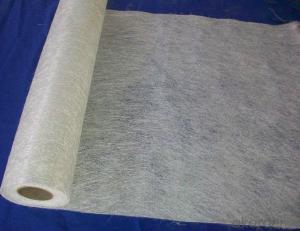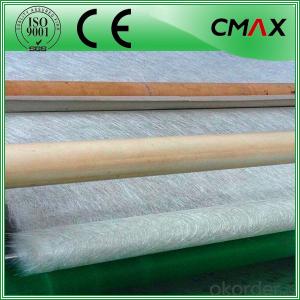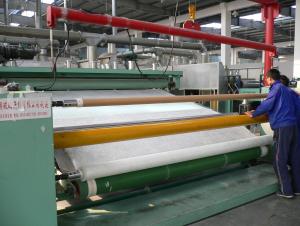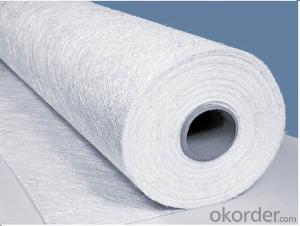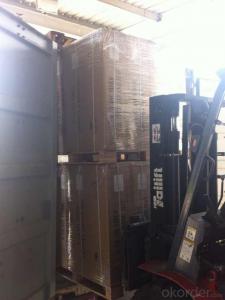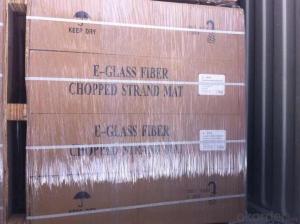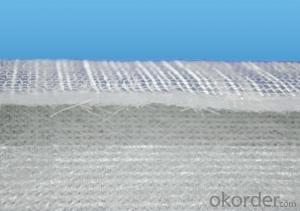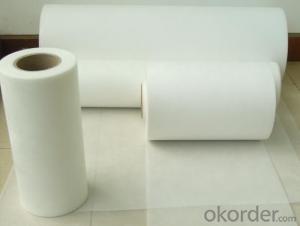Fiberglass Mat Tissue E Glass Chopped Strand Mat Emulsion Bonded
- Loading Port:
- China Main Port
- Payment Terms:
- TT or LC
- Min Order Qty:
- 10000 kg
- Supply Capability:
- 200000kg Per Month kg/month
OKorder Service Pledge
OKorder Financial Service
You Might Also Like
1.Brief Introduction E Glass Emulsion Chopped Strand Mat is made of randomly distributed chopped strands held tighter by a emulsion binder. It is compatible with UP, VE, EP resins. Property Area Weight Moisture Content Size Content Breakage Strength Width (%) (%) (%) (N) (mm) Mathods IS03374 ISO3344 ISO1887 ISO3342 EMC80E ±7.5 ≤0.20 8-12 ≥40 50-3300 EMC100E ≥40 EMC120E ≥50 EMC150E 4-8 ≥50 EMC180E ≥60 EMC200E ≥60 EMC225E ≥60 EMC300E 3-4 ≥90 EMC450E ≥120 EMC600E ≥150 EMC900E ≥200 Special specification can be produce according to customer requirements 4.FAQ
It is compatible with UP, VE, EP, PF resins.
The roll width ranges from 50mm to 3300mm.
Additional demands on wet-out and decomposition time may be available upon request.
It is designed for use in hand lay-up, filament winding, compression molding and continuous laminating processes. Its end-use applications include boats, bath equipment, automotive parts, chemical corrosion resistant pipes, tanks, cooling towers and building components
2.Product Features
Fast breakdown in styrene
High tensile strength, allowing for use in hand lay-up process to produce large-area parts
Good wet-through and fast wet-out in resins, rapid air lease
Superior acid corrosion resistance
3.Product Specifications 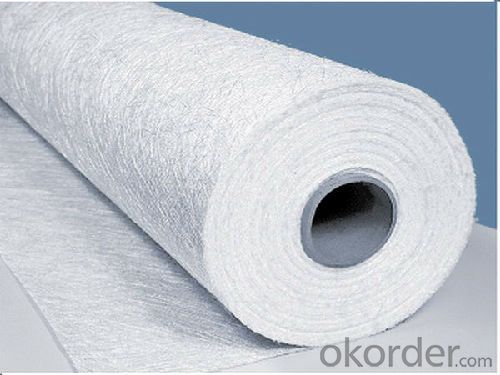
Packaging:
Each Chopped Strand Mat is wound onto a paper tube which has an inside diameter of 76mm and the mat roll has a diameter of 275mm. The mat roll is wrapped up with plastic film,and then packed in a cardboard box or wrapped up with kraft paper. The rolls can be vertically or horizontally placed. For transportation, the rolls can be loaded into a cantainer directly or on pallets.
- Q: Is fiberglass mat tissue compatible with different curing methods?
- Yes, fiberglass mat tissue is compatible with different curing methods. Fiberglass mat tissue is a versatile material that can be used in various curing processes, such as hot press curing, autoclave curing, and vacuum bag curing. The mat tissue is designed to be compatible with different resins and curing temperatures, ensuring that it can withstand the curing process without any adverse effects. Additionally, the mat tissue is engineered to have good wet-out properties, allowing it to effectively bond with the resin during curing. Overall, fiberglass mat tissue is a suitable choice for different curing methods and can be successfully used in a wide range of applications.
- Q: Can fiberglass mat tissue be used for composite pipe manufacturing?
- Yes, fiberglass mat tissue can be used for composite pipe manufacturing. Fiberglass mat tissue provides reinforcement to the composite pipe, enhancing its strength, durability, and resistance to corrosion.
- Q: How is fiberglass mat tissue used in the production of sports equipment?
- Fiberglass mat tissue is used in the production of sports equipment as it provides strength, flexibility, and durability to the final product. It is commonly used as a reinforcement material in the manufacturing of sports equipment such as snowboards, surfboards, hockey sticks, and tennis rackets. The fiberglass mat tissue is typically layered with resin and other materials, forming a composite structure that enhances the overall performance and longevity of the sports equipment.
- Q: What are the different types of fiberglass mat tissue available?
- A variety of fiberglass mat tissues can be found, each possessing its own distinct qualities and uses. Some commonly encountered types include the following: 1. Chopped Strand Mat (CSM): This is the most widely utilized and fundamental kind of fiberglass mat tissue. It comprises randomly arranged chopped fiberglass strands held together by a binder. CSM is commonly employed in situations where strength and resilience are crucial, such as in the construction of boats and automotive components. 2. Continuous Filament Mat (CFM): Unlike CSM, CFM is fashioned from continuous fiberglass strands woven into a mat. This type of fiberglass mat tissue offers exceptional tensile strength and dimensional stability, making it ideal for applications necessitating high strength and stiffness, such as in aerospace components and wind turbine blades. 3. Surface Veil Mat: Surface veil mat is an extremely thin and lightweight fiberglass mat tissue primarily used for surface finishing and reinforcement. It is typically applied as a final layer in composite laminates to enhance surface smoothness and water resistance. 4. Stitched Mat: Stitched mat is produced by interweaving continuous fiberglass strands with stitching thread. This construction yields enhanced strength and improved drapability, facilitating easier conformity to complex shapes. Stitched mat is commonly utilized in applications necessitating a blend of strength and flexibility, such as in the production of pipes and tanks. 5. Binderless Mat: Binderless mat is a specialized kind of fiberglass mat tissue that lacks binders or resins. Instead, the fibers are mechanically bonded through a needling process. This renders binderless mat highly resistant to chemical attack and suitable for use in corrosive environments, such as chemical storage tanks and pipes. These examples merely touch upon the wide range of fiberglass mat tissues available. The selection of which type to employ hinges on the specific requirements of the application, encompassing factors such as strength, flexibility, surface finish, and resistance to various environmental influences.
- Q: Is fiberglass mat tissue suitable for marine applications?
- Yes, fiberglass mat tissue is suitable for marine applications. It is a commonly used material in the marine industry due to its durability, strength, and resistance to water and corrosion. Fiberglass mat tissue is lightweight, making it ideal for boat construction and repairs. It is also highly resistant to UV rays, chemicals, and harsh weather conditions, which are common in marine environments. Moreover, it provides excellent structural reinforcement and can be easily shaped and molded to fit various marine components. Overall, fiberglass mat tissue is a reliable and versatile material for marine applications.
- Q: What is the thermal resistance of fiberglass mat tissue?
- The thermal resistance of fiberglass mat tissue typically ranges from 0.3 to 0.6 square meters Kelvin per watt (m²K/W), depending on the specific composition and thickness of the material.
- Q: How is fiberglass mat tissue used in the aerospace industry?
- Due to its exceptional properties and versatility, fiberglass mat tissue finds extensive use in the aerospace industry. It plays a crucial role in the manufacturing and maintenance of aircraft, serving various purposes. One of the primary applications of fiberglass mat tissue in the aerospace industry lies in its incorporation into composite materials. These materials, formed by combining two or more substances, are widely employed in aircraft construction to reduce weight while ensuring structural integrity. In composite laminates, fiberglass mat tissue acts as a reinforcement material, providing strength, stiffness, and dimensional stability. Consequently, it is suitable for various components such as wings, fuselage, and tail sections. The high tensile strength of fiberglass mat tissue guarantees that the composite structure can withstand the demanding conditions faced in the aerospace industry. Moreover, aircraft repair and maintenance extensively utilize fiberglass mat tissue. This material is commonly employed in the process of composite patching, which involves the restoration of damaged or worn-out composite components. By impregnating the fiberglass mat tissue with resin and applying it to the affected area, strength is restored and structural integrity is regained. This technique is widely employed for repairing aircraft components like fairings, radomes, and other composite parts, ensuring their safe and reliable operation. Additionally, fiberglass mat tissue finds application in the insulation of aircraft. It is used as a thermal and acoustic insulator in critical areas of the aircraft, including the interior cabin. By reducing heat transfer and preventing condensation, fiberglass mat tissue helps maintain a comfortable environment for passengers and crew. Furthermore, its sound-absorbing properties minimize noise levels inside the aircraft, ultimately enhancing the overall travel experience. In summary, fiberglass mat tissue is an essential material in the aerospace industry. Its exceptional properties, including high tensile strength, dimensional stability, and thermal/acoustic insulation capabilities, make it an ideal choice for a wide range of applications. From composite structures to aircraft repair and maintenance, fiberglass mat tissue proves indispensable in ensuring the efficiency and safety of aerospace operations.
- Q: How does the surface finish of fiberglass mat tissue affect its adhesion to resin?
- The surface finish of fiberglass mat tissue plays a crucial role in its adhesion to resin. A smooth surface finish allows for better contact and bonding between the tissue and resin, resulting in stronger adhesion. On the other hand, a rough or textured surface finish may hinder the contact area and reduce the bond strength between the tissue and resin. Therefore, a smooth surface finish is generally preferred for achieving optimal adhesion between fiberglass mat tissue and resin.
- Q: Can fiberglass mat tissue be used for making lightweight flooring?
- Yes, fiberglass mat tissue can be used for making lightweight flooring. It is a versatile material that offers excellent strength and durability while being lightweight, making it a suitable choice for flooring applications where weight reduction is desired.
- Q: How does fiberglass mat tissue contribute to the strength and durability of composite materials?
- Fiberglass mat tissue enhances the strength and durability of composite materials by providing reinforcement and structural integrity. The mat tissue consists of randomly arranged fibers that are bonded together, creating a strong and flexible matrix. This matrix acts as a support system, distributing stress and load across the material, thereby preventing cracks and fractures. Additionally, the fiberglass mat tissue acts as a barrier against moisture and other environmental factors, protecting the composite material from degradation and ensuring long-lasting performance.
Send your message to us
Fiberglass Mat Tissue E Glass Chopped Strand Mat Emulsion Bonded
- Loading Port:
- China Main Port
- Payment Terms:
- TT or LC
- Min Order Qty:
- 10000 kg
- Supply Capability:
- 200000kg Per Month kg/month
OKorder Service Pledge
OKorder Financial Service
Similar products
Hot products
Hot Searches
Related keywords
